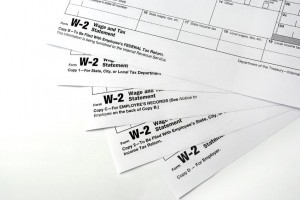Fall is the ideal time to plan for a successful year-end and creating a tracking calendar of important tasks/dates is a good place to start. Some of these tasks are:
- Order W-2 and 1099 forms or confirm your payroll vendor is set to print them for you.
- Confirm federal and state tax deposit due dates which can vary based on your company specific deposit schedule.
- Closely monitor deductions such as 401(k), Dependent Care Assistance Plan (DCAP), Health Savings Account (HSA), and Flexible Spending Accounts (FSA) to ensure that set limits aren’t exceeded for the year. Remember, effective January 1, 2013, Cafeteria Plans do not allow participants to contribute more than $2,500 annually to FSA.
- Reconcile quarterly wages matching totals to Form 941.
- Calculate and process year-end taxable fringe benefit entries.
- Once W-2s are generated, reconcile the W-2 summary to the federal tax liability for the year.
Multiple Work States
If you have employees working in more than one state, this is a good time to confirm that you have accurately allocated their wages amongst the states. This may not be as simple as it appears, there are different rules depending upon the state. Although most states follow federal tax treatment, listed below are a few exceptions to this rule:
- California – employee contributions to a Health Savings Account are considered taxable. Any employer contributions to HSAs are considered income for state reporting purposes.
- New Jersey – employee contributions to a Health Savings Account are considered taxable. Health insurance premiums paid through payroll deductions must be made on an after tax basis.
- Pennsylvania – 401(k) deferrals are included in income.
These differences make it extremely difficult for payroll systems to accurately allocate wages amongst these states.
Understanding Fringe Benefits
A fringe benefit is a form of compensation for the performance of services. For example, you provide an employee with a fringe benefit when you allow the employee to use a business vehicle for personal use. Another example is when health and dental insurance premiums are paid on behalf of any s-corp owner with ownership of 2% or more.
Any fringe benefit provided to an employee is taxable and the value of the fringe benefit must be included in the taxpayers’ pay unless the law specifically excludes it. Should you have any questions regarding the taxability of a specific fringe benefit you should discuss it with your accountant or tax advisor.
Related year-end posts:
- Six small business strategies to consider as the year winds down
- Small business year-end financial checklist: 6 must do’s
- 5 Important IT tasks for year-end
- A proactive year-end approach to employee benefits
If you have questions or would like to learn more, please reach out to Genesis HR Solutions at AskUs@genesishrsolutions.com or 800-367-8367.
Genesis HR Solutions is the premier PEO provider for Massachusetts based businesses.
This post was originally posted on 10/9/2013 and is being re-run as part of our year-end tips series.




